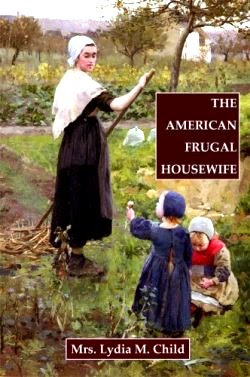My husband
calculated that I have been making bread for over 50 years…starting as a
preteen helping my mother, grandmother, older sisters, and then making bread on
my own. My mom made 5 loaves at a time
in a large “bread-rising pan with a lid”, later I switched to making bread with
the inexpensive, light-weight mixers available in the 60’s and 70’s, where you
started out in the mixer and added the remaining flour and kneaded loaves by
hand.
Nowadays, I
usually make 2 or more loaves of bread at a time, and my 5 quart bowl-lift
style KitchenAid is the way I usually make it.
I like my food processor for single loaves
and small recipes, but my mixer will make up to 3 loaves at a time, with a lot
less work than I used to do.
We like
artisan-type breads, but they don’t keep well, and, let’s face it, most home
kitchens don’t have the kind of oven that bakeries have, where steam is
injected or there is a trough for boiling, steaming water in the oven. Instead, we make our own sandwich breads,
rolls, buns and sweet breads.
Try fast yeasts:
Instant, RapidRise or Bread Machine yeast. The first rise is actually a 10 minute rest,
you don’t have to proof the yeast, and the second rise after shaping is often
only half as long. Check Here to read about fast yeasts and converting your recipes.
The ratio of flour and liquid is critical in any bread recipe. Flour absorbs different amounts of liquids
depending on its protein and / or moisture content, as well at the temperature
and humidity of the air. If your recipe has a range of flour to use,
start with the lower amount and add only enough to form a dough that
starts to pull away from the sides of your bowl. You will be adding more during
the kneading stage, so don't add it all during the mixing stage. Dry, stiff doughs and
wet, sticky doughs do not rise well.
 Never let salt or sugar be in direct contact with the yeast.
To avoid this, add these ingredients after 1 to 2 cups of flour have been mixed
in. To be honest, I’m not that careful
about this, and usually have good results. I do place my ingredients around the bowl over the flour to keep track of what I have added.
Never let salt or sugar be in direct contact with the yeast.
To avoid this, add these ingredients after 1 to 2 cups of flour have been mixed
in. To be honest, I’m not that careful
about this, and usually have good results. I do place my ingredients around the bowl over the flour to keep track of what I have added.
Shaping your dough:
To divide dough: weigh the dough on a
kitchen scale to obtain loaves and rolls which are of uniform size, they’ll
bake evenly with better results.
 Rolling out dough using a rolling pin
will help eliminate air bubbles in the dough and prevent "holes" in
the bread.
Rolling out dough using a rolling pin
will help eliminate air bubbles in the dough and prevent "holes" in
the bread.
I own a variety of bread pans, but you really don’t need any, next week
we’ll make simple bread and bake it right on a cookie sheet or pizza pan.
Baking
Yeast dough
should always be baked so the center of the loaf or pan is in the center of
a preheated oven for the length of time specified in the
recipe. The final expansion of the dough, called "oven spring",
takes place in the first few minutes of baking in a hot oven. If the oven
has been used for the rising of the dough, remove dough before preheating
the oven.
Testing for Doneness - Two Methods
The time
tested method of determining if the bread has baked sufficiently is to tap the
crust lightly and listen for a hollow sound.
A more
accurate method is to insert an instant-read thermometer (available in most
housewares departments) into the center of the bread. Robin Hood flour says
when the thermometer registers 190°F -200° for regular breads, remove the bread
from the oven. For whole grain loaves,
it should be 210°.
If the crust
is browning too quickly, cover the top with a tented sheet of foil or parchment
paper.
To avoid
soggy bread, remove your bread from the pan immediately after baking
and place on a wire rack to cool.
Follow your Recipe for the Appropriate Oven Temperature
Some guidelines:
400°F to
425°F for bread with very little or no sugar, such as French bread.
375°F for
most breads with an average amount of sugar (less than 1/2 cup sugar per 4 cups
of flour)
350°F for
sweet breads high in sugar (more than 1/2 cup sugar per 4 cups of flour)
Some other tools in addition to my mixer that help me get
good, consistent baking results are a digital scale, an instant read
thermometer, a flour shaker, a rolling pin, a bench knife or scraper, and a
bread board or cutting mat. You can
shape your loaves right on the counter-top, but I doubt that you want to use a
knife to cut dough on your counter.
The scale helps you get your loaves the
same size, as well as measuring your ingredients right into the bowl without
bothering with measuring cups. Fast,
fast, fast.
Double-check
your recipe for amounts of each ingredient needed.
The thermometer helps you determine the
temperature of your liquids so you don’t kill your yeast or slow it down. You can also determine if your bread is done,
eliminating a lot of guess-work.
 A rising box or cover...I finally found an inexpensive plastic box that has a flat top edge, so it will fit flat on a counter, or on my glass range top (of course, it doesn't have any burners turned on). I bought it at that most popular of chain discount stores. Two of my 12" long bread pans will fit under it; the bread rises without having to be greased or covered with plastic wrap, waxed paper or a towel, and it doesn't form a skin.
A rising box or cover...I finally found an inexpensive plastic box that has a flat top edge, so it will fit flat on a counter, or on my glass range top (of course, it doesn't have any burners turned on). I bought it at that most popular of chain discount stores. Two of my 12" long bread pans will fit under it; the bread rises without having to be greased or covered with plastic wrap, waxed paper or a towel, and it doesn't form a skin.
I also use plastic covers sold for my sheet pans for raising buns or rolls. Quick, cheap, no waste and little cleanup!
 A rising box or cover...I finally found an inexpensive plastic box that has a flat top edge, so it will fit flat on a counter, or on my glass range top (of course, it doesn't have any burners turned on). I bought it at that most popular of chain discount stores. Two of my 12" long bread pans will fit under it; the bread rises without having to be greased or covered with plastic wrap, waxed paper or a towel, and it doesn't form a skin.
A rising box or cover...I finally found an inexpensive plastic box that has a flat top edge, so it will fit flat on a counter, or on my glass range top (of course, it doesn't have any burners turned on). I bought it at that most popular of chain discount stores. Two of my 12" long bread pans will fit under it; the bread rises without having to be greased or covered with plastic wrap, waxed paper or a towel, and it doesn't form a skin. I also use plastic covers sold for my sheet pans for raising buns or rolls. Quick, cheap, no waste and little cleanup!




















I enjoyed your post on making bread. Good tips and like the one using the covers. I have had wrap or towels stick to the bread. I have use quite a few of your recipes with wonderful results.
ReplyDeleteThanks for your comment...I have sure had the wrap or waxed paper (even greased) stick to the bread, but I didn't want to spend an arm and leg buying an expensive "proof" box either.
DeleteAlways happy to hear from other bakers and cooks.
How I never thought of using a plastic box to cover my bread is beyond me... I can't wait to try this out with my next batch of bread! :)
ReplyDeleteIt works if you don't have a gap between the edge of the box and your flat surface.
DeleteGood luck...nice to meet another bread baker.
Just stumbled onto your site, love the commonsense instruction and your pictures!! That bread looks delicious!
ReplyDelete